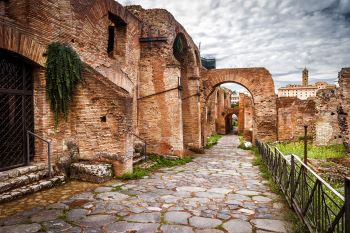




The Palatine Hill is bordered to the north by the Forum Romanum, to the west by the Velabrum Valley and the Forum Boarium and to the south by the valley of the Circus Maximus. On almost all sides – except in the north-east – the hill falls away steeply by around 30 metres. Its height is around 51 metres, while the total area on the ridge of the hill covers around 10 hectares. According to the founding legend, Romulus gave the city its name after defeating his brother Remus in a contest. And Romulus chose the Palatine Hill as the place where the city was founded.
The oldest finds of human settlements on this site date back to the 10th century BC. Temples were built on the Palatine from the 3rd and 2nd centuries BC, of which only the remains of the temples of Apollo, Victoria and Magna Mater can still be seen today. At this point in history, the Palatine became the residential neighbourhood of wealthy citizens of the Roman upper class.

Clickhere
to see on google maps
Address:
Via di San Gregorio, 30
00186 Roma RM
Italy
You can add your Colosseum ticket to your Rome City Pass as an option – and it’s also valid for the archaeological sites on the Palatine Hill